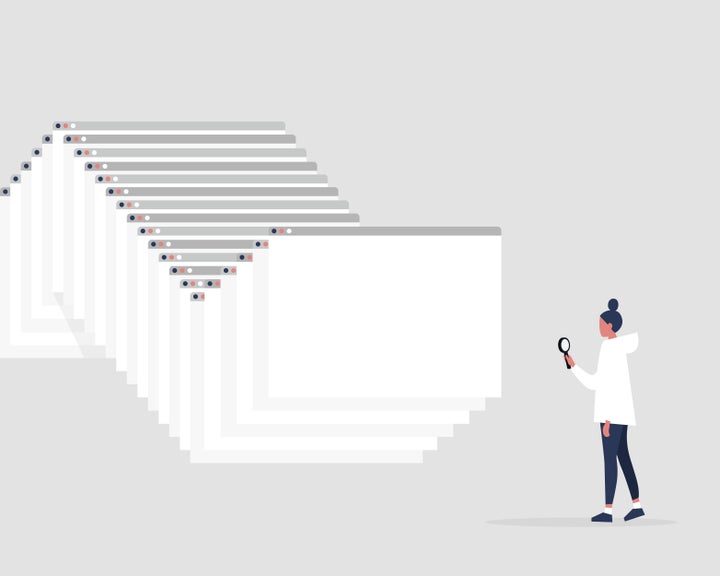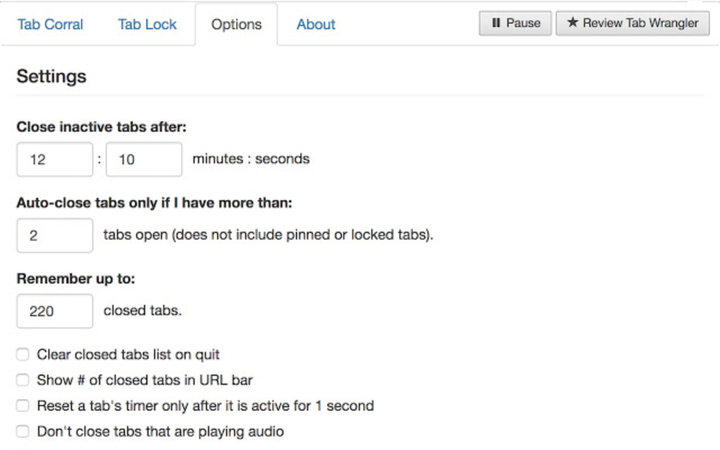
Fresh off making New Year’s resolutions, I’m still confronting who I want to be compared with who I really am ― and who I am is a browser tab hoarder living with digital clutter.
I have 13 open tabs in Google Chrome as I write this, and they’re in no discernible order. Tabs of grocery lists are wedged between calendars, interesting articles, Gmail, Twitter, pretty clothes on sale, and other links I do not remember opening, with no rhyme or reason.
I know I need help controlling my browser tabs, and I am not the only one. There are an increasing number of browser services to help people like me control our base instincts. And apparently we’ve been looking for solutions for centuries ― there was even a library tool to keep multiple physical books open at the same time.
These days, popular browser extension One Tab turns all of your tabs into a list. Tabs limiter with queue, a Google Chrome extension, does exactly what its title indicates. Can’t find which open tab is blasting that annoying ad music? Mute All Inactive Tabs can help. Need to free up visual space? Turn your tabs into a trunk-like structure with Tree Tabs. Want to share your tabs of research while planning a trip? Try Workona. You can automatically organize tabs from most-used to least-used with Recent Tab List for the Safari web browser. And if you need stronger punishments, xTab will start to close open tabs after you exceed a set limit, while Tab Wrangler will close them after inactivity.
But before you use a browser extension to track or limit your surplus of tabs, you must first understand why you keep letting your tabs go wild in the first place. You ― and I ― need a digital Oracle of Delphi.
So I asked the person who would know all about browser tabs. He invented them.
Why Tabs Stress Us Out ― And What To Do About It
In 1997, Adam Stiles, then a 25-year-old developer and now a senior director of engineering at ID Analytics, created a new browser feature. Called SimulBrowse, it let users switch back and forth between webpages by clicking on boxes. Suddenly, users could see and track multiple web pages all at once. A new way of exploring the internet was born.
SimulBrowse, which became NetCaptor, was among the first services to offer tabbed browsing. Stiles said that his feature was the first to use tabs the way we do today. “NetCaptor was the first to offer dynamic browser tabs where each one had its own navigation stack and could function independently of others,” Stiles wrote on his website. “Modern tabbed browsers like Firefox, Mozilla, Safari, and Opera based their tabbed browsing systems either directly or indirectly on NetCaptor.”
Stiles, who had eight organized tabs open when we chatted, said our overuse of tabs may be traced back to the psychology of loss aversion.
“Why do we keep so many tabs open? Because finding whatever is on those tabs is actually hard,” he said. “We don’t think we can get back there very easily. Therefore: I better not close that tab.”
To empower users, browser developers need to give them back a sense of control over loss while clearing up their desktop real estate, Stiles suggests. He said he feels neutral about his invention being a distraction, but recognizes that some of us tab hoarders cannot handle the freedom of unlimited tabs.
“It’s only a distraction if people use it that way,” he said. “The invention gives people freedom. Perhaps it gives some people too much freedom.”
Stiles likes the idea of using a background manager that would close tabs for you after too much inactivity. Tab Auto Close and Tab Wrangler accomplish this; Tab Suspender hibernates inactive tabs to free up memory. Or you can learn to dump your ideas into one list. (One Tab does this automatically.)
“If you are going to start the kind of task that will result in many many tabs, it wouldn’t be a bad idea to create a quick note somewhere to keep track of where you are,” Stiles said.

At issue is the fact that every tab is a distraction and this distraction can be limitless. Each browser tab can represent one more pull at our attention, and we do not handle that well. Humans are known to be poor multitaskers. When we switch tasks at work, it costs us an average of 23 minutes and 15 seconds to get back on task, one study on digital stress found. Each time participants interrupted themselves by taking a phone call or a web surfing break during the study, they became more stressed and frustrated.
You want internet exploring to be a peaceful experience. Learning to be mindful about your tabs means learning to notice when you are piling on tabs for no reason.
Try applying the lessons of mindfulness: When you are deep in a tab quagmire, take a step back and notice your tabs order. Does that tab need to be open or did you leave it there on purpose? Can you dump your tabs research into a tidy list? Perform tab triage and start saving or deleting irrelevant tabs when they grow overwhelming. Or rely on a system to manage it for you. But you need some sort of plan to soothe your loss aversion. Otherwise, you’ll go back to hoarding tabs each time you open an internet browser.
